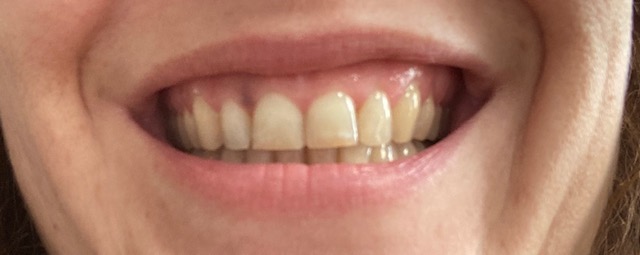What Is Maryland Dental Bridge? Fix Teeth Gaps

Maryland dental bridges are a type of dental restoration used to fix teeth gaps by bridging the space between existing teeth. This dental prosthetic is specifically designed for patients who are missing one or more teeth in a particular area of the mouth, typically in the front or back sections. The Maryland dental bridge is a popular choice due to its conservative approach, as it requires minimal alteration to the surrounding teeth.
The Maryland dental bridge is characterized by its unique design, which involves the use of metal wings or clips that are bonded to the back of adjacent teeth. These metal wings provide the necessary support and stability for the artificial tooth, also known as a pontic, to fill the gap. The pontic is usually made of ceramic or porcelain, which matches the color and texture of the surrounding teeth, creating a natural-looking smile.
One of the primary advantages of the Maryland dental bridge is its conservative nature. Unlike traditional dental bridges, which require the crowning of adjacent teeth, the Maryland bridge preserves more of the natural tooth structure. This approach reduces the risk of tooth sensitivity and makes the bridge feel more like a natural part of the mouth.
To create a Maryland dental bridge, the dentist will typically follow a multi-step process:
- Preparation: The dentist will start by preparing the area where the bridge will be placed. This may involve cleaning the teeth and removing any decay or damaged areas.
- Impressions: The dentist will take impressions of the teeth above and below the gap, which will be used to create a model of the mouth.
- Model creation: The impressions will be sent to a dental laboratory, where a model of the mouth will be created. The laboratory will use this model to craft the Maryland dental bridge.
- Bridge fabrication: The dental laboratory will fabricate the bridge, using the model as a guide. The bridge will consist of the metal wings, the pontic, and any additional components needed for support.
- Fitting: Once the bridge is complete, the dentist will fit it into place, making any necessary adjustments to ensure a comfortable and secure fit.
Maryland dental bridges offer several benefits, including:
- Improved aesthetics: The bridge fills the gap, creating a natural-looking smile and boosting confidence.
- Enhanced chewing function: The bridge allows for more efficient chewing and distribution of food, reducing the risk of digestive problems.
- Preservation of surrounding teeth: By providing additional support, the bridge helps to prevent the surrounding teeth from shifting or becoming misaligned.
- Durability: With proper care, a Maryland dental bridge can last for many years, providing a long-term solution for tooth loss.
However, like any dental restoration, the Maryland dental bridge is not without its potential drawbacks. Some of the possible disadvantages include:
- Sensitivity: Some patients may experience sensitivity in the teeth adjacent to the bridge, particularly if the bonding process is not done correctly.
- Difficulty cleaning: The bridge can make it more challenging to clean the surrounding teeth, increasing the risk of plaque buildup and decay.
- Adjustment period: It may take some time to get used to the feel of the bridge, and patients may need to adjust their biting or chewing habits.
To mitigate these risks, it is essential to maintain good oral hygiene habits, including regular brushing, flossing, and dental check-ups. Patients should also be aware of the potential signs of problems, such as sensitivity, pain, or difficulty chewing, and report these issues to their dentist promptly.
In conclusion, the Maryland dental bridge is a viable solution for patients seeking to fix teeth gaps. Its conservative approach, natural appearance, and durability make it an attractive option for those looking to restore their smile and improve their oral function. By understanding the benefits and potential drawbacks of the Maryland dental bridge, patients can make informed decisions about their dental care and enjoy a healthier, more confident smile.
What is the average cost of a Maryland dental bridge?
+The average cost of a Maryland dental bridge can range from $1,500 to $5,000, depending on the location, materials used, and complexity of the case.
How long does it take to create a Maryland dental bridge?
+The creation of a Maryland dental bridge typically takes 2-3 weeks, although this timeframe may vary depending on the dental laboratory and the complexity of the case.
Can I eat normally with a Maryland dental bridge?
+Yes, you can eat normally with a Maryland dental bridge. However, it is recommended to avoid chewing excessively hard or sticky foods, as these can put unnecessary stress on the bridge.
How do I care for my Maryland dental bridge?
+To care for your Maryland dental bridge, brush and floss regularly, and visit your dentist for regular check-ups. It is also recommended to use a soft-bristled toothbrush and a gentle toothpaste to clean the bridge and surrounding teeth.
Can I get a Maryland dental bridge if I have gum disease?
+It is recommended to treat gum disease before getting a Maryland dental bridge. Untreated gum disease can lead to further complications and may affect the longevity of the bridge.
By addressing these questions and concerns, patients can make informed decisions about their dental care and enjoy a healthier, more confident smile with their Maryland dental bridge.



